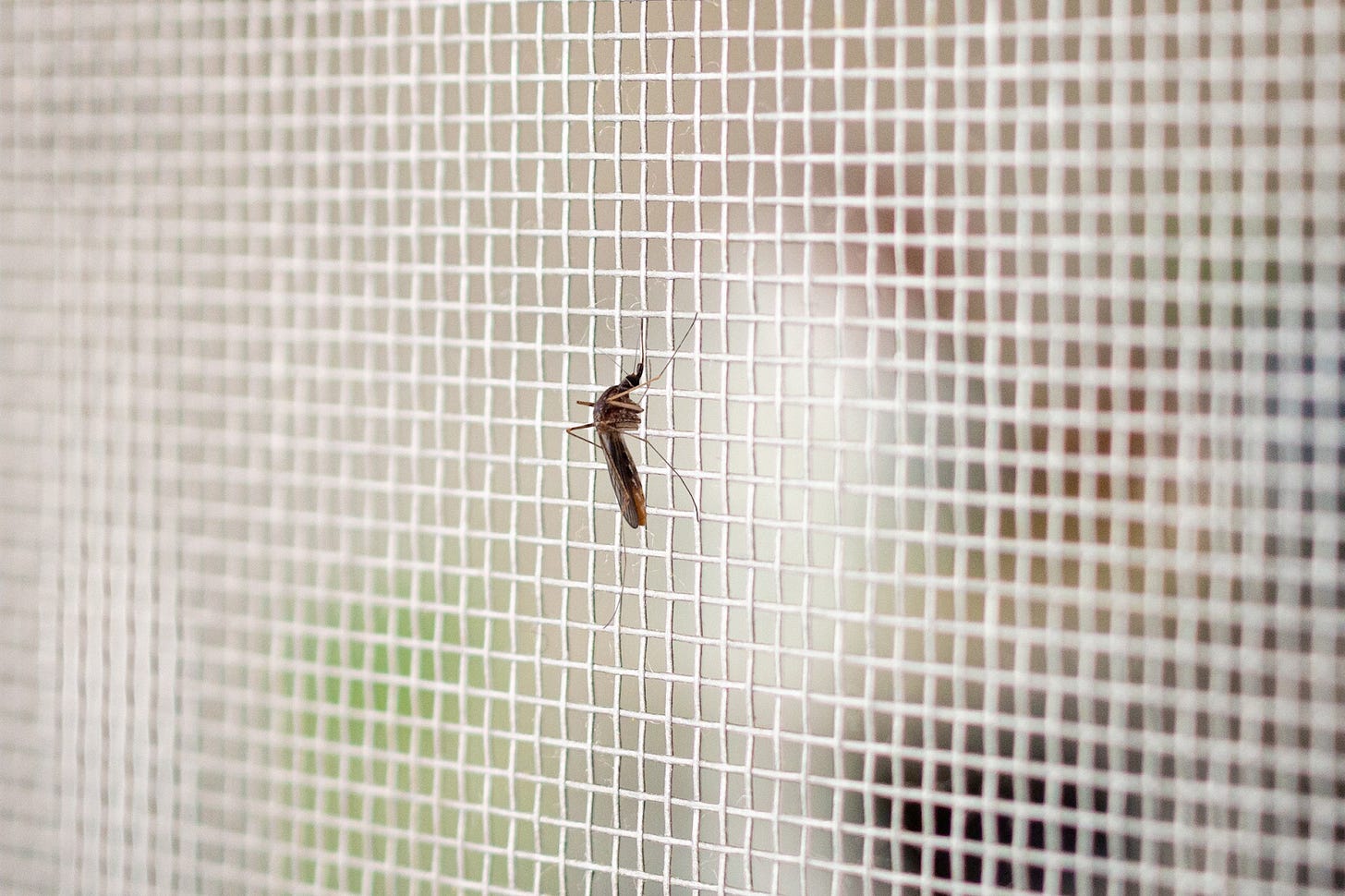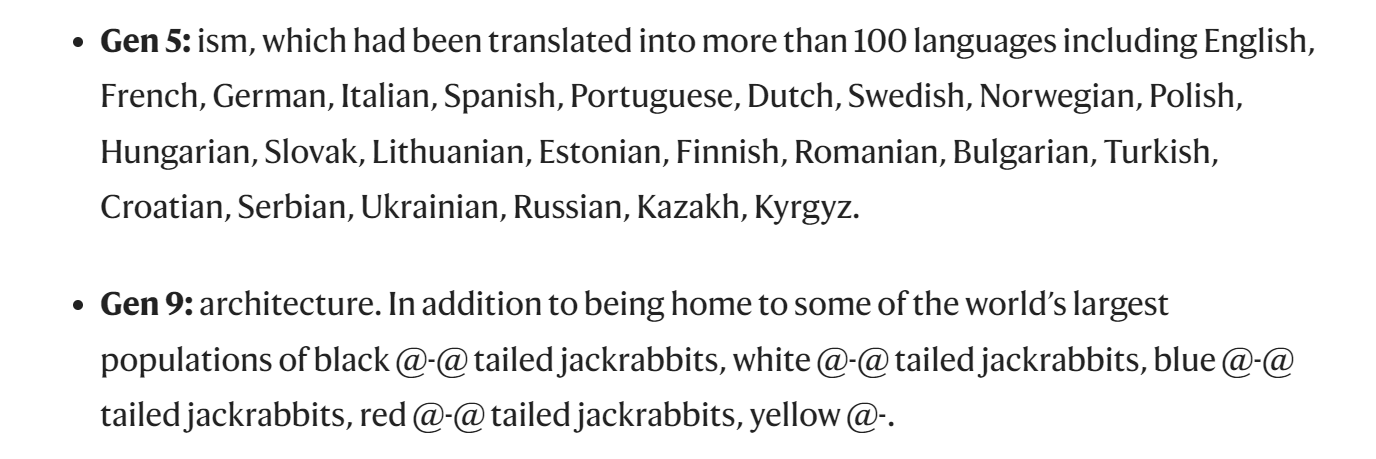Why Malaria Nets Appear to Attract Bed Bugs
Researchers from North Carolina State University found a surprising consequence of using insecticide-treated bed nets and sprays against malaria in Botswana. By surveying the scientific literature, the researchers found that these interventions were not only effective against mosquitoes but also against household pests like bed bugs and cockroaches. Over the decades, however, the bugs and roaches developed resistance and are now coming back. This has given some users the impression that the malaria nets actually attract bed bugs. The study suggests that future malaria-control tools should also target household pests to maintain community trust and efficacy. Press release here. Paper here.
More Evidence for AI Model Collapse
Image: Gibberish produced by a language model that was trained on its predecessor’s output. Source: Shurmailov et al, Nature 631, 755 (2024).
The more we use AI and distribute its output, the higher the probability that AIs of the coming generations will be trained on the output of the previous ones. Previous studies have already found that this will degrade the quality of the model’s output, both for written text and images, but a group from Oxford and Cambridge has now studied this process closer.
They trained a medium-sized language model on Wikipedia articles and its subsequent generations on the output of the former ones. They found that after merely 10 generations the text had degraded to unreadable nonsense. They say that this happens because the output lacks diversity and reinforces mistakes that cannot be corrected. I talked about earlier evidence of AI model collapse in this video. The new paper is here.
California Residents Want AI Regulation – Or Maybe Not
A poll from the Artificial Intelligence Policy Institute among the residents of California – home to Silicon Valley – found that 59% of participants supported a bill that would require AI companies to do safety checks on their products. The rate is even higher, 64%, among those working in the tech sector. The survey has been criticized as a push poll that suggested an answer in the phrasing of the questions.






